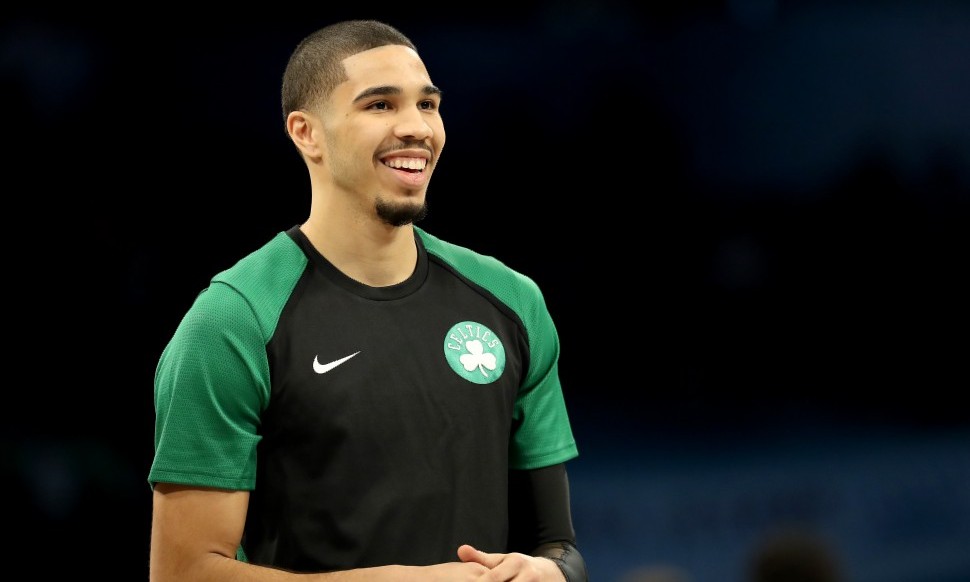
After a tumultuous summer that saw them effectively swap Kyrie Irving and Terry Rozier for Kemba Walker and tab Enes Kanter as the replacement for Al Horford and Aron Baynes, the Celtics enter the 2019-20 season with far lower expectations than a year ago.
Coming off a trip to the Eastern Conference Finals in which they pushed a LeBron-led Cavs team to seven games without Irving and Gordon Hayward, the Celtics entered last season as the favorites to win the East. It made sense to slot them into the top spot, but it just never clicked for the whole squad. They limped to a fourth place finish, and eventually, were eliminated in the second round of the postseason despite the obvious collection of talent.
This season, they’re projected into the third or fourth spot in the conference and can embrace a bit of an underdog role once again, a role in which they thrived in 2016-17 and 2017-18. The Bucks and Sixers are deservedly the top dogs in the East and Boston has plenty of questions facing the roster. The biggest among them is how they’ll do defensively with Kanter subbed in for Horford and Baynes, who anchored a very good team on that end of the floor.
That is the short-term concern, but long-term the question is how they build going forward. Walker will hopefully be a better fit for this team than Kyrie, but he too has always been a high-usage point guard — albeit by necessity — in Charlotte and there will be some time needed for everyone to assume their role offensively. Next to Walker are Boston’s promising young wings in Jayson Tatum and Jaylen Brown, both coming off of inconsistent seasons that contributed to the Celtics’ underwhelming campaign.
There’s little doubt that Tatum is seen as the more valuable player in that duo around the league, and the expectation is, as one league executive laid out to CelticsBlog at Summer League, Tatum is the one they’ll build around as the franchise player.
“We tried to get him. The price they asked was insane, as it should be. He’s going to be an All-Star. If his numbers were down, it’s only because no 19-year-old had been at that level before. Kemba (Walker) is a great addition and (Gordon) Hayward is going to be better, but Tatum is the franchise in Boston.”
Tatum fulfilling his potential is going to be the biggest factor in the long-term success of the Celtics. We saw his capabilities as a rookie and immediately projected him out to being an All-Star and potential All-NBA talent, but his second season was more of the rollercoaster we typically see from young players, as teams focused in on attacking him defensively. Now, the question is how will Tatum counter the league’s response to his rookie year for his third season, adapting his approach to what team’s showed they’ll try to do to contain him.
As a sophomore, Tatum settled far too often for midrange jumpers (43.9 percent of his attempts came from between the restricted area and three-point line), on which he shot poorly. This isn’t about stepping back for more threes, as he actually increased the percentage of threes he attempted last season, but being more assertive going to the rim. Tatum is an elite finisher at the rim, converting on 67.8 percent of his attempts inside three feet a year ago. The problem is he only took 26 percent of his attempts at the rim, compared to 32 percent as a rookie.
A drop off in efficiency with an increase in usage is a normal occurrence, but the Celtics do need Tatum to take better shots, namely in getting the tin. Not only is he a great finisher at the basket, but it will get the 85 percent free throw shooter back to the line far more often, as his free throw rate plummeted from .309 to .220 from his rookie to sophomore seasons. A better partnership between he and Walker than what he had with Irving will be key in this, as Tatum getting to the rim more is predicated on him being able to initiate his offense a bit earlier in the shot clock.
There’s little question he can do this, it’s more of whether he’s willing and able to, while also being asked to do more defensively. With Horford gone, the defense on the perimeter is going to have more stress placed on it because of the lack of a rim protector to clean up mistakes in the paint. Tatum, Brown, Hayward, and Marcus Smart will be critical to them maintaining a certain level of defense in Boston, and that takes extra energy and effort that can’t be saved for the offensive end any more.
Tatum’s capable of all of this, but if Boston’s going to be competitive with those top two teams in the East this season (or in the next couple years), he’s going to have to find a way to produce on both ends on a nightly basis. Consistency was a big issue a year ago and is often the biggest hurdle for a player going from “very good” to “All-Star/All-NBA caliber.” Tatum has to crack that code, but if and when he does, he has the tools to be “the franchise” for the Celtics, which they’re banking on in a post-Kyrie world.






